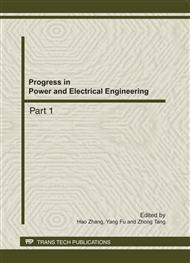p.773
p.779
p.784
p.789
p.794
p.798
p.802
p.807
p.811
Thermoeconomic Optimization of a Seawater Source Heat Pump System for Residential Buildings
Abstract:
A seawater source heat pump (SWHP) system offer an attractive option for heating and cooling residential and commercial buildings owing to their higher energy efficiency compared with conventional systems. A thermoeconomic model was developed for analysis and optimization of SWHP with residential building. The thermodynamic and thermoeconomic optimum result for SWHP in the Qingdao, china, weather conditions were obtained using MATLAB optimization toolbox. The thermoeconomic optimization results show exergy loss and EER increasing by 22.7% and 13.9% respectively, but annual production costs reduce by 29.1%.
Info:
Periodical:
Pages:
794-797
Citation:
Online since:
October 2011
Authors:
Price:
Сopyright:
© 2012 Trans Tech Publications Ltd. All Rights Reserved
Share:
Citation:


